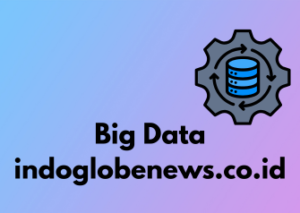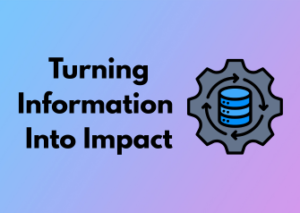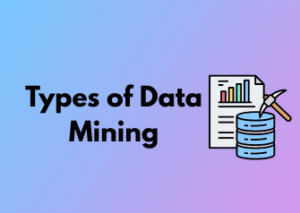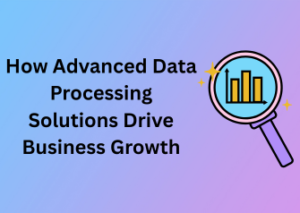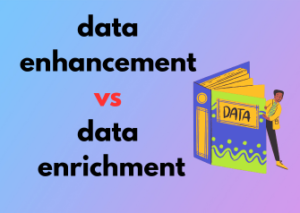When it comes to market research, let’s be honest – the participants are the secret sauce to meaningful insights. But let’s dig deeper: what really makes people tick? Why do they take the time to fill out surveys, join focus groups, or complete online tasks? Spoiler alert: it’s all about understanding what motivates them and using that knowledge to encourage authentic, valuable input.
It’s About More Than Just Money
Sure, incentives play a key role, but participant motivation goes beyond dollars and cents. Let’s face it – humans are complex! While monetary rewards might initially catch someone’s eye, the real driving factors often lie in purpose, recognition, and even curiosity. People want to feel that their opinions matter and that they’re making a difference. Simply put, they need to feel valued.
Know Your Audience
One of the golden rules in market research is to know your audience. This means moving beyond surface-level assumptions and really understanding their needs, interests, and behavior. Consider this:
- Tech enthusiasts: These participants might be motivated by early access to new gadgets or software.
- Parents: They might appreciate parenting products, education vouchers, or even a chance to share their insights on family-oriented topics.
- Younger demographics: Digital gift cards or charitable donations made in their name might resonate more.
By catering to the unique motivations of your target group, you’re already setting the stage for meaningful participation.
The Drive for Purpose
Here’s a fun fact: people often feel motivated to contribute to something larger – like shaping the future of products or services they care about. For example, if someone loves coffee, they’re more likely to take part in research that promises to help craft the perfect cup. Tapping into that sense of purpose drives better results and higher engagement.
Engagement Through Flexibility
No two participants are the same, right? Some love traditional surveys, while others prefer quick polls or interactive tasks. Keeping engagement flexible – and aligning with their preferred method of interaction – shows that you respect their time. And yes, respecting their time is huge in motivating them to respond thoughtfully.
Trust as Motivation
Want to know a quick barrier to participation? Lack of trust. If participants don’t believe their data is safe or that their input is actually being used constructively, why would they bother? So, building trust through transparent communication and detailing the “why” behind the research can work wonders. Be clear about how their responses contribute to the bigger picture, and reassure them that privacy is your priority.

The Science of Reward Selection: Picking What Truly Matters
Let’s talk about something we all love: rewards. Whether it’s a simple ‘thank you’ or something a bit more extravagant, we can all agree that getting rewarded feels good, right? But when it comes to market research incentives, picking the right reward isn’t just about making participants happy—it’s about getting meaningful responses that drive actionable insights. So, how do you select rewards that truly matter? That’s where the science of reward selection comes into play.
Understand Your Audience First
Before diving into which reward to offer, **know who your participants are**. Are they college students? Working professionals? Stay-at-home parents? Each group has different priorities, and the rewards that excite them will vary. For example:
- College students might appreciate gift cards or discounts on popular apps or food delivery services.
- Busy professionals might be more inclined toward monetary incentives or something that saves them time, like premium memberships.
- Parents might prefer practical rewards like grocery vouchers or childcare-related discounts.
The point is, your participants’ demographics, lifestyles, and values should heavily influence the reward you choose. A one-size-fits-all reward often misses the mark, leaving participants disengaged or, worse, uninterested in participating at all.
Appeal to Human Psychology
Here’s a fun fact: offering incentives is as much about psychology as it is about generosity. People crave rewards that feel valuable, **relevant**, and, dare I say, a little **special**. The principle of reciprocity (you scratch my back, I scratch yours) plays a big role here—when participants feel like they’re getting something worthwhile, they’re more likely to put genuine effort into their responses.
But here’s the trick: what feels worthwhile isn’t always about monetary worth. For instance, a limited-edition product sample might excite someone more than $10 cash. Why? Because it offers exclusivity and novelty. So, never underestimate the power of uniqueness!
Don’t Overcomplicate It
Another golden rule: keep it simple. If your reward system feels like a maze, people will give up before they even start. Focus on rewards that are easy to understand and easy to redeem. A cluttered incentive program creates frustration, which leads to abandonment—and nobody wants that.
Let’s paint a picture. Imagine signing up for a survey and being promised a reward, only to find out you have to jump through 15 hoops to claim it. Would you stick around? Probably not. So, prioritize clarity and convenience when designing your incentive structure.
Test, Learn, Repeat
Ah, the beauty of trial and error! Even with all this advice, the best way to nail your reward system is by **testing and learning**. Run small-scale tests with different groups and gather feedback. Did participants feel the reward was worth their time? Did it inspire them to provide thorough responses? Use this data to fine-tune your approach.
Balancing Fairness and Value: Ensuring Mutually Beneficial Structures
It’s a fine art, isn’t it? Creating market research incentives that balance fairness and value can feel like walking a tightrope. You want to motivate participants to give their honest, thoughtful input, but at the same time, you need to ensure the cost makes sense for your organization. Striking this balance can be tricky, but when done right, it sets the stage for a win-win relationship for both researchers and participants.
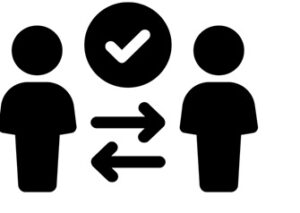
Why Fairness Matters
Let’s start with fairness. Your participants contribute their time, thoughts, and sometimes even personal information. It’s only fair to offer them something of equal value in return. By doing so, you recognize their efforts and encourage them to take part in future studies. When incentives don’t align with the time or effort required, participants may feel undervalued, potentially leading to rushed or incomplete responses.
Put yourself in their shoes for a second: would you spend 45 minutes answering detailed survey questions for a token reward? Probably not, right? Approaching incentives with fairness ensures participants feel respected, indirectly improving the authenticity and quality of the data collected.
Value = More Than Just Money
While fairness is about providing a proper exchange for time or effort, value goes a step further. It’s about ensuring the reward is meaningful to your target audience. People aren’t motivated solely by monetary value; often, it’s about relevance.
For example:
- A research survey targeting parents might offer gift cards for popular kids’ stores.
- Young professionals could prefer access to an exclusive webinar in their industry.
- Frequent travelers might appreciate airline miles over cash.
Understanding your audience’s needs – and offering incentives they actually care about – can elevate their overall experience and engagement.
The Double Win: Mutually Beneficial Structures
Now, here’s the sweet spot: the perfect incentive structure doesn’t just benefit your participants, but also ensures value for your business or brand. This means setting up systems where the rewards incentivize thoughtful, complete responses and discourage hasty participation. Consider these ideas:
- Tiered Incentives: Offer higher-value rewards for longer or more in-depth participation. For instance, a short screener survey could earn a small reward, while a full-hour interview might yield something more robust, like cash or experiences.
- Referral Bonuses: Encourage participants to share your surveys with others, offering extra rewards for successful referrals. This not only expands your reach but also reduces recruitment costs.
- Performance-Based Rewards: Provide bonuses for highly engaged participants who complete complex surveys thoughtfully and on time.
These structures reduce wasteful spending and ensure you’re rewarding quality rather than quantity. Additionally, participants become more invested in your research since they see a direct link between their effort and the rewards they receive.
Transparency Is Key
Here’s one last tip: be upfront about what participants can expect. Clearly explain the effort needed and the reward provided before they opt in. A vague or overly complicated incentive program might frustrate participants and hurt retention.
Transparency reinforces trust. If participants trust your team to reward them fairly and deliver on promises, they’re more likely to invest their time and effort wholeheartedly into your study.
Cultural Sensitivity in Incentives: Why One Size Doesn’t Fit All
When it comes to market research, one thing is crystal clear: people are wonderfully diverse. You might be conducting surveys in one region while simultaneously engaging participants across the globe. In these scenarios, a cookie-cutter approach to incentives just won’t cut it. Let’s dive into why cultural sensitivity is key when crafting incentives – and how you can create structures that truly resonate across various audiences.
Why Cultural Context Matters
It’s tempting to assume that people everywhere prioritize the same types of rewards. However, cultural norms, values, and societal expectations heavily influence what people perceive as valuable or motivating. For instance:
- In some cultures, tangible rewards like gift cards or merchandise are prized because they represent practical value.
- In other regions, community-oriented incentives, such as donations to charitable causes, can be far more appealing.
- In highly individualistic societies, personalized rewards or recognition might drive engagement better than collective gestures.
If your incentive strategy ignores these differences, you could end up alienating participants or diminishing response rates. For example, offering coffee shop gift cards in a region where such stores are sparse doesn’t just miss the mark; it shows a lack of understanding about participant lifestyles.
Avoiding Common Pitfalls
Even with the best intentions, it’s easy to misstep when trying to navigate cultural differences. Here are a few common mistakes and how to avoid them:
- Assuming Universality of Monetary Value: While cash or cash-equivalent rewards might seem like a safe bet, the perception of money as an incentive can vary drastically. In some cultures, it could be seen as impersonal or even offensive.
- Overlooking Local Preferences: Failing to offer options relevant to participants’ day-to-day lives is a surefire way to lose interest. For example, offering a US-based streaming subscription to participants in a region where that platform isn’t available could backfire.
- Using Overly Generalized Rewards: A generic incentive might make sense for convenience, but participants often feel more valued when presented with tailored options that acknowledge their unique preferences.
By addressing these pitfalls with thoughtful research and planning, you can offer incentives that feel relevant and meaningful to your audience.
Practical Tips for Culturally Sensitive Incentives
Now that we’ve established the importance of cultural considerations, let’s talk solutions! Here are some actionable tips for infusing cultural sensitivity into your incentive strategy:
- Do Your Homework: Research the cultural values, traditions, and preferences of the target population. If you’re conducting research in multiple locations, partner with local experts to get a nuanced understanding.
- Offer Choice: Providing a variety of reward options allows participants to pick what matters to them most. For example, let them choose between merchandise, charity donations, or online gift cards that cater to their locality.
- Be Respectful of Religious and Cultural Norms: Avoid offering rewards that could inadvertently clash with cultural or religious values. For example, promoting alcohol-related incentives in communities where it’s taboo will likely alienate participants.
- Communicate Clearly: Make sure reward options and their delivery methods are explained in a way that aligns with local communication styles. Participants are more engaged when the process feels approachable, not confusing.
Monetary vs Non-Monetary Incentives: Which Drives Engagement Better?
When it comes to market research, incentives are like the secret sauce that makes everything click. They’re not just about offering something for participation; they’re about creating genuine motivation. But here’s the question: should we lean on dollars and cents, or does value lie beyond cold, hard cash? Let’s dig into the debate of monetary versus non-monetary incentives and see which one really gets people going!
The Case for Cold Hard Cash
It’s hard to deny the universal appeal of money. It’s simple, straightforward, and gets an instant “yes” from most participants. Monetary incentives are especially potent because they tie directly into intrinsic human motivation — immediate reward. Here are some reasons why they work:
- Universality: No explanations required; everyone knows what money can do. Whether it’s a $10 gift card or a $100 check, cash incentives are a language everyone understands.
- Flexibility: Participants can use the monetary reward however they see fit, which adds to the overall appeal.
- Trustworthiness: Offering cash can convey reliability and professionalism, particularly for first-time participants who might not otherwise trust the research process.
However, purely offering money can sometimes feel transactional. There’s a concern that participants might prioritize the reward over contributing thoughtful, meaningful responses. That’s where non-monetary incentives come in to spice things up.
The Appeal of Non-Monetary Incentives
Non-monetary rewards have a charm of their own. They’re less about direct value and more about offering something meaningful, memorable, or even exclusive. Here’s why you might want to consider them:
- Personalization: Tailored incentives like event tickets, brand merchandise, or curated gifts can create a deeper sense of appreciation and connection.
- Unique Experiences: Think beyond material items – exclusive memberships, one-on-one consultations, or even early product access can leave a lasting impression.
- Brand Awareness: Offering branded items isn’t just a reward; it doubles as marketing. Every mug, tote bag, or hoodie spreads your brand message.
Non-monetary rewards signal that you care enough to go the extra mile. They often foster goodwill and emotional engagement that money alone might not elicit. However, they aren’t foolproof. If they don’t align with participants’ interests and preferences, they could come across as impersonal.
Which Works Better?
It’s not necessarily a battle of “this or that” – it’s about knowing your audience. A robust market research study might blend both monetary and non-monetary incentives. For example, younger audiences might appreciate digital gift cards (monetary) while professionals might value career-enhancing resources like exclusive webinars (non-monetary).
When deciding which to use, ask yourself:
- What kind of participants am I targeting?
- What motivates them most – immediate reward or unique value?
- Can a hybrid approach create more holistic engagement?
Measuring the ROI of Market Research Incentives
When it comes to market research, we all know that incentives play a crucial role in driving participation and ensuring quality responses. But let’s not beat around the bush—how are you supposed to know whether these incentives are actually giving you the bang for your buck? That’s where measuring the ROI (Return on Investment) of market research incentives comes in.
In this section, we’ll dive into the what, why, and how of ROI measurement so you can feel confident that your incentive strategy is working for you and not against you.
Why Is Measuring ROI So Important?
Here’s the deal: incentives are an investment. Whether you’re handing out cash, gift cards, discounts, or even exclusive perks, there’s a cost involved. Measuring ROI ensures you’re not just throwing money (or rewards) at participants without understanding the results.
A good ROI analysis lets you answer key questions like:
- Are my incentives increasing participation rates?
- Do these incentives attract my target audience or merely “freebie hunters”?
- What’s the long-term value of the insights gathered compared to the money spent?
By knowing what works and what doesn’t, you can finetune your incentive strategy to get maximum value while staying efficient.
The Building Blocks of ROI for Market Research Incentives
Measuring ROI may sound complicated, but it boils down to some basic equations. The goal is to calculate the gains from the research in relation to the costs of the incentives. Here’s a breakdown of the steps:
- Track Your Costs: Start by quantifying exactly how much you spent. This includes the direct costs of incentives, such as the value of gift cards or other rewards, as well as indirect costs like logistical or shipment fees.
- Identify Performance Metrics: What does success look like? Perhaps it’s the response rate, the quality of insights, or the representativeness of your sample. Pick measurable metrics to monitor.
- Calculate Your Benefits: Determine the cost savings or additional revenue your market insights contribute to your business. For example, did the data help make a more effective product or improve marketing campaigns?
- Run the Numbers: ROI is typically calculated using this formula:ROI (%) = [(Profit or Benefit – Cost) ÷ Cost] x 100.
This calculation helps quantify whether your investment in the incentive is paying off or whether you need to rework your strategy.
Common Pitfalls to Avoid
While measuring ROI is powerful, there are a few traps that can throw off your analysis:
- Short-term focus: Don’t just measure immediate gains. Effective market research often delivers long-term value that might not be obvious right away.
- Overlooking quality: It’s easy to get hung up on high participation rates, but they’re irrelevant if the data quality is poor. Pay attention to the responses you’re receiving, ensuring they meet your research objectives.
- Forgetting non-monetary benefits: Not all benefits can be dressed up in dollar signs. Increased brand trust or customer loyalty, sparked by ethical research practices, should be factored into the big picture.
Future Trends: Adapting to Digital Behavior
Let’s talk about the future. It’s no secret that the way we conduct market research and entice participation is transforming faster than ever, driven primarily by shifts in digital behavior. The days of sticking to old-school methods are over—what worked five years ago may not cut it today. So, grab your metaphorical crystal ball as we explore how incentives can align with our increasingly tech-savvy world!
1. Gamification: The Power of Play
Gamification isn’t all fun and games—it’s a growing trend shaping market research incentives. People love the idea of points, badges, and rewards tied to playing along. Incentives integrated into digital experiences can tap into this passion for achievement. Whether it’s tracking progress on a leaderboard or rewarding interactive participation through an app, gamified systems resonate with modern audiences, keeping them engaged and motivated.
For instance, instead of offering a flat monetary incentive for survey completion, platforms could reward participants with points they can later redeem for prizes. The key here is to make the process of participating fun and rewarding in both senses of the word.
2. Micro-Payments and Mobile Integration
In the digital age, immediacy is king. Long gone are the days when participants were willing to wait weeks to receive their incentives in the mail. Today, services like PayPal, Venmo, and e-gift cards can deliver instant gratification.
Even better, embracing mobile wallets ensures participation stays seamless. Imagine completing a quick survey on your smartphone during your coffee break and receiving a digital voucher before your latte even cools down. This level of immediate reward builds goodwill and improves engagement levels significantly.
3. The Rise of Non-Traditional Incentives
As digital behavior evolves, so does the understanding of what makes an incentive truly valuable. Something as simple as offering access to exclusive content—like a personalized report, advanced features, or early beta testing of a product—can be more motivational than cash for certain demographics.
For example, tech enthusiasts might jump at the chance to receive beta access to cutting-edge tools, while fitness junkies might value discounts on subscription-based health apps. The takeaway here? Businesses need to think creatively about incentives that feel meaningful within niche digital communities.
4. Customizing Experiences through AI
Artificial intelligence has opened doors for personalized feedback loops. Smart systems can analyze user behavior, preferences, and completion rates to offer incentives that feel tailored to the individual. Automation can help researchers match incentives to participant profiles. Think about it: Wouldn’t you be more likely to take part if the reward felt like it was chosen just for you?
This trend could redefine how surveys are marketed. By leveraging AI, researchers can ensure participants feel seen and appreciated, which will only enhance response rates.
5. Building Trust in the Digital Space
Lastly, transparency in incentive delivery matters more than ever in digital interactions. Make sure to clearly communicate how participants will receive their rewards and when. Setting and meeting these expectations fosters trust, which is vital for anyone considering working with you again in the future.
Wrapping Up: Digital is the Future, But Strategy is Key
The future of market research incentives is undeniably intertwined with digital innovation. However, simply jumping into the latest trends isn’t enough. A strategic, participant-focused approach is essential if you want to succeed in the ever-dynamic digital arena.
So, embrace tech-driven creativity, prioritize customization, and never forget the importance of putting your participants first. The digital world isn’t just a part of the future; it’s where the future is happening, right now.
“`


